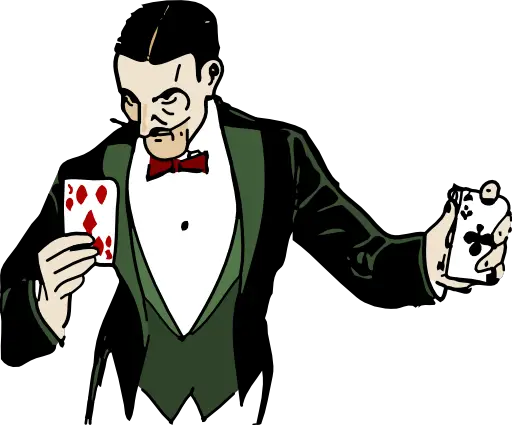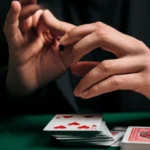Support our educational content for free when you purchase through links on our site. Learn more
Unlock the Secrets: 15 Essential Mentalism Skills You Must Master [2024] 🧠✨
Have you ever watched a mentalist perform and wondered how they seem to read minds or predict choices? 🤔 You’re not alone! Mentalism is a captivating art form that combines psychology, suggestion, and a sprinkle of magic to create mind-bending illusions. Imagine standing in front of an audience, confidently revealing their thoughts or predicting their actions—sounds thrilling, right?
In this article, we’re diving deep into the 15 essential mentalism skills that every aspiring mentalist should master. From honing your observational skills to understanding the intricacies of human psychology, we’ll guide you through each skill step-by-step. Plus, we’ll share some fascinating anecdotes from renowned mentalists that will inspire you on your journey. So, buckle up as we explore the world of mentalism and reveal the secrets behind this mesmerizing craft! 🎩✨
Key Takeaways
- Mentalism is an art: It combines psychology, suggestion, and performance to create illusions that captivate audiences.
- Essential skills include:
- Observation: Master the ability to read body language and micro-expressions.
- Psychological Insight: Understand cognitive biases to influence thoughts and actions.
- Cold Reading: Make educated guesses based on observable cues.
- Communication: Develop strong verbal skills to engage and connect with your audience.
- Practice is crucial: Like any art form, mastering mentalism requires dedication and consistent practice.
- Resources available: Explore books and online courses to deepen your understanding and skills in mentalism.
Ready to take the plunge into the world of mentalism? 👉 Shop our recommended books on mentalism here! 📚✨
Table of Contents
- Quick Tips and Facts about Mentalism Skills
- The Evolution of Mentalism: A Brief History
- What is Mentalism & What Does a Mentalist Do?
- Essential Skills Every Aspiring Mentalist Should Master
- Mentalism Tricks & Techniques: Your Toolkit for Success
- Popular Books to Enhance Your Mentalism Skills
- How to Become a Mentalist? – Courses and Resources
- Famous Mentalists Who Changed the Game
- Mentalism FAQs
- Conclusion
- Recommended Links
- Reference Links
1. Quick Tips and Facts about Mentalism Skills 🧠✨
Want to become a mentalist and blow people’s minds? 🤔 It’s not as impossible as you might think! 🤯 Here are some quick tips and facts to get you started:
- Mentalism is rooted in psychology: Understanding how the human mind works is essential for any aspiring mentalist. We recommend checking out Unlock the Secrets: 12 Must-Read Mentalism Books for Aspiring Mind Magicians 2024 for some great resources.
- Observation is key: Pay close attention to people’s body language, micro-expressions, and even their clothing choices. These are all clues to their thoughts and feelings.🕵️
- Practice makes perfect: Just like any skill, mentalism takes practice. Start with simple tricks and techniques, and gradually work your way up to more complex ones.
- Confidence is everything: Even if you’re not 100% sure of yourself, project an aura of confidence. Your audience is more likely to believe in your abilities if you do. 😉
- Don’t reveal your secrets: The mystery is part of the fun! Keep your methods to yourself and let your audience marvel at your “powers”.🤫
2. The Evolution of Mentalism: A Brief History ⏳
Mentalism, as we know it, didn’t just appear out of thin air. It has a rich and fascinating history, dating back centuries!
From Mystics to Showmen 🧙♂️🎭
Early forms of mentalism were often intertwined with religion and mysticism. Think oracles, prophets, and seers claiming supernatural powers. 🔮 Over time, these practices evolved into more theatrical performances, with performers like John Henry Anderson captivating audiences in the 19th century with feats of “mind reading” and “clairvoyance.”
The Rise of Modern Mentalism 🧠✨
The 20th century saw the rise of mentalism as a distinct form of entertainment, with performers like Dunninger and Kreskin achieving widespread fame. These pioneers incorporated elements of psychology, suggestion, and even magic into their acts, paving the way for modern mentalists like Derren Brown and David Blaine.
3. What is Mentalism & What Does a Mentalist Do? 🤔
Mentalism is a performing art that creates the illusion of extraordinary mental abilities. Mentalists achieve this through a combination of:
- Psychology: Understanding human behavior, persuasion, and suggestion.
- Misdirection: Expertly diverting the audience’s attention at crucial moments.
- Sleight of Hand: Subtle and skillful manipulation of objects, often borrowed from magic.
- Showmanship: Creating a captivating and theatrical experience for the audience.
A mentalist might perform feats like:
- Mind Reading: Seemingly knowing what someone is thinking or predicting their choices.
- Telekinesis: Appearing to move objects with their mind.
- Predictions: Accurately forecasting future events.
- Memory Feats: Recalling vast amounts of information with incredible accuracy.
But remember, mentalism is all about illusion! It’s a form of entertainment, not actual psychic powers (though we’d be lying if we said we haven’t surprised ourselves a few times! 😉).
4. Essential Skills Every Aspiring Mentalist Should Master 📚🧠
So, you’re ready to delve into the world of mentalism? Excellent! Here are the essential skills you’ll need to hone:
1. Sharpen Your Observational Skills 👁️
Mentalists are masters of observation. They pick up on the smallest details:
- Body Language: Micro-expressions, posture shifts, gestures—they all reveal hidden thoughts and emotions.
- Verbal Cues: Tone of voice, choice of words, even pauses and hesitations can be incredibly telling.
- Environmental Clues: A person’s surroundings, clothing, and belongings offer valuable insights into their personality and preferences.
2. Become a Student of Psychology 🧠
To influence someone’s mind, you need to understand how it works. Study:
- Cognitive Biases: The predictable errors in thinking that affect everyone’s judgments and decisions.
- Persuasion Techniques: How to subtly influence people’s thoughts and actions through language and framing.
- Nonverbal Communication: Reading and interpreting the silent language of the body.
3. Master the Art of Cold Reading 🕵️♀️
Cold reading is a technique used to make educated guesses about a stranger based on general observations and probability. It’s a core skill for mentalists, allowing them to appear as if they have genuine insights into a person’s life.
4. Develop Impeccable Communication Skills 🗣️
Mentalists are master communicators. They know how to:
- Build Rapport: Quickly establish trust and connection with anyone.
- Tell Engaging Stories: Captivate their audience with compelling narratives.
- Use Language Powerfully: Employ hypnotic language patterns and suggestive techniques.
5. Embrace the Power of Practice 🔁
Like any art form, mentalism requires dedication and practice.
- Start with the basics: Master simple tricks and techniques before moving on to more advanced ones.
- Practice on friends and family: Get comfortable performing in front of others and receive constructive feedback.
- Never stop learning: The world of mentalism is constantly evolving. Stay curious and explore new techniques and approaches.
5. Mentalism Tricks & Techniques: Your Toolkit for Success 🧰
Now for the fun part—the tricks of the trade! Here are a few mentalism techniques to add to your arsenal:
1. The Classic “Grey Elephant from Denmark” 🐘🇩🇰
This simple yet effective trick relies on the power of suggestion and the predictability of human thought patterns.
- The Setup: Ask someone to think of a number between 1 and 10.
- The Calculation: Have them multiply that number by 9, then add the digits of the result together. If the result is a two-digit number, have them add those digits together again. Finally, have them subtract 5 from the final number.
- The Suggestion: Tell them to think of a country that starts with the letter corresponding to their final number (1=A, 2=B, etc.). Most people will choose Denmark (D).
- The Reveal: Ask them to think of an animal that starts with the second letter of that country’s name. Most people will choose Elephant. Finally, ask them to think of a color that elephants are often associated with. Most will say Grey.
The Result: You’ve successfully “guessed” that they were thinking of a grey elephant from Denmark! 🤯
2. The “I Knew You Were Going to Choose That” Card Trick 🃏
This trick relies on a bit of sleight of hand and some clever psychology.
- The Force: Learn a card forcing technique. This allows you to subtly control which card a participant selects from the deck, even though they believe they’ve made a free choice.
- The Prediction: Before the trick, write down the forced card on a piece of paper and place it in a sealed envelope.
- The Performance: Have the participant select a card (ensuring they choose the forced card), then focus your attention on them. Build suspense, acting as if you’re reading their mind or sensing their energy.
- The Reveal: Have them reveal their chosen card, then dramatically open the envelope to reveal your prediction.
The Result: Your audience will be amazed by your apparent ability to predict the future!
3. The Power of Observation: “Reading” Someone’s Belongings 👓💍
This technique relies on your ability to make astute observations and deductions about someone based on their personal belongings.
- The Setup: Ask a participant to hand you an everyday object—a watch, a ring, a key chain, etc.
- The Observation: Carefully examine the object, paying attention to every detail: its condition, any inscriptions, the style, etc.
- The Deduction: Use your observations to make educated guesses about the person’s personality, occupation, or recent activities. For example, a worn-out watch might suggest someone with an active lifestyle, while an inscription might reveal a special date or relationship.
- The Delivery: Present your “readings” with confidence and a touch of theatricality. Be vague enough to allow for multiple interpretations, but specific enough to seem insightful.
The Result: Your audience will be impressed by your apparent ability to glean deep insights from seemingly mundane objects.
6. Popular Books to Enhance Your Mentalism Skills 📚
Ready to dive deeper into the world of mentalism? These books are a great place to start:
- 13 Steps to Mentalism by Tony Corinda: Considered the “bible” of mentalism, this comprehensive guide covers everything from basic principles to advanced techniques.
- 👉 CHECK PRICE on: Amazon
- Tricks of the Mind by Derren Brown: Renowned mentalist Derren Brown shares his insights into the psychology of deception and some of his signature techniques.
- 👉 CHECK PRICE on: Amazon
- The Art of Mentalism by Bob Cassidy: A highly regarded mentalist and author, Bob Cassidy offers a practical and engaging approach to learning mentalism.
- 👉 CHECK PRICE on: Amazon
- Practical Mental Magic by Theodore Annemann: A classic collection of mentalism effects and routines, this book is a treasure trove of ideas for aspiring performers.
- 👉 CHECK PRICE on: Amazon
For even more recommendations, check out our comprehensive guide: Unlock the Secrets: 12 Must-Read Mentalism Books for Aspiring Mind Magicians 2024
7. How to Become a Mentalist? – Courses and Resources 💻
Looking for more structured learning? These courses and resources can help you take your mentalism skills to the next level:
- MasterClass – Derren Brown Teaches Mentalism: Learn from the master himself! Derren Brown’s MasterClass offers a fascinating glimpse into his techniques and philosophies.
- Enroll in Derren Brown’s MasterClass: MasterClass Official Website
- Udemy – The Art of Mentalism: Udemy offers a variety of mentalism courses for all levels, from beginner to advanced.
- Explore Mentalism Courses on Udemy: Udemy Official Website
- Penguin Magic – Mastering the Art of Mentalism: Penguin Magic is a reputable magic dealer that also offers a range of online courses, including some excellent mentalism options.
- Browse Mentalism Courses on Penguin Magic: Penguin Magic Official Website
- Banachek’s Psychological Subtleties: Renowned mentalist Banachek delves into the psychological principles behind his powerful performances.
- Learn More About Banachek’s Work: Banachek Official Website
8. Famous Mentalists Who Changed the Game 🌟
Throughout history, certain mentalists have captivated audiences and pushed the boundaries of the art form. Here are a few legends who’ve left an indelible mark on the world of mentalism:
- Derren Brown: Known for his sophisticated and often controversial performances, Derren Brown masterfully blends psychology, suggestion, and magic to create truly mind-bending experiences.
- David Blaine: Famed for his endurance stunts and street magic, David Blaine also incorporates elements of mentalism into his performances, leaving audiences astonished and bewildered.
- Uri Geller: A controversial figure in the world of mentalism, Uri Geller is best known for his spoon-bending feats and claims of psychic abilities. While his methods have been the subject of much debate, his impact on popular culture is undeniable.
- The Amazing Kreskin: A prolific mentalist and author, The Amazing Kreskin has been performing for over six decades, captivating audiences with his mind-reading demonstrations and predictions.
Mentalism FAQs ❓
What are the basics of mentalism?
Mentalism is a performing art that creates the illusion of extraordinary mental abilities, such as mind reading, thought influencing, and predicting outcomes. It combines techniques from psychology, magic, and showmanship to create captivating performances that leave audiences questioning reality.
What skills do you need to be a mentalist?
To become a successful mentalist, you need a variety of skills:
- Observation: The ability to read body language and micro-expressions.
- Psychological Insight: Knowledge of cognitive biases and human behavior.
- Communication: Strong verbal skills to build rapport and convey ideas effectively.
- Sleight of Hand: Mastery of physical techniques to create illusions.
- Confidence: The ability to perform in front of an audience with poise.
Read more about “Unlock the Secrets: 12 Must-Read Mentalism Books for Aspiring Mind Magicians … 🧠📚”
What are the techniques of mentalism?
Mentalists use various techniques, including:
- Cold Reading: Making educated guesses based on observable cues.
- Misdirection: Diverting the audience’s attention to create illusions.
- Suggestion: Influencing thoughts and actions through verbal cues.
- Memory Techniques: Utilizing mnemonic devices to recall information.
How do mentalists guess words?
Mentalists often use a combination of techniques to “guess” words:
- Psychological Principles: Understanding common thought patterns and associations.
- Observation: Reading body language and micro-expressions to gauge reactions.
- Pre-Show Work: Gathering information about participants beforehand, often unbeknownst to them.
Read more about “🤯 Unmasking the Mind: 7 Secrets of Mentalism Revealed …”
What ethical considerations should mentalists keep in mind?
Mentalists must maintain ethical standards to ensure they do not exploit their audience’s trust. This includes:
- Transparency: Being clear about the nature of their performances (i.e., they are illusions, not actual psychic abilities).
- Respect: Avoiding sensitive topics and personal information that could cause discomfort.
- Responsibility: Using their skills for entertainment rather than manipulation or deceit.
Read more about “What is Mentalism? Unveiling the Secrets of Mind-Bending Illusions … 🤯”
Conclusion 🎩✨
In this comprehensive exploration of mentalism, we’ve uncovered the essential skills, techniques, and resources you need to embark on your journey into this fascinating art form. From honing your observational skills to mastering the art of cold reading, the path to becoming a successful mentalist is filled with exciting challenges and opportunities for growth.
Positives:
- Engaging and Entertaining: Mentalism captivates audiences and can be a thrilling way to connect with people.
- Deep Psychological Insights: You’ll gain a better understanding of human behavior and psychology, which can enhance your communication skills in everyday life.
- Creative Expression: Mentalism allows for a unique blend of artistry and performance, enabling you to express yourself in imaginative ways.
Negatives:
- Time-Consuming: Mastering mentalism requires dedication and practice, which can be daunting for some.
- Requires Confidence: Performing in front of an audience can be nerve-wracking, especially when you’re just starting out.
- Ethical Considerations: As a mentalist, it’s crucial to maintain ethical standards and not exploit your audience’s trust.
With the right mindset, practice, and resources, you can become a skilled mentalist and amaze everyone around you! So, are you ready to take the plunge into the mesmerizing world of mentalism? Your journey begins now! 🌟
Recommended Links 🛒
- Books:
Reference Links 🔗
- Derren Brown Official Website
- David Blaine Official Website
- Banachek Official Website
- Riccardo Berdini’s 6 Easy Mentalism Tricks to Amaze Your Friends
With this wealth of information at your fingertips, you’re well on your way to mastering the art of mentalism. Good luck, and may your performances leave everyone in awe! 🎩✨






